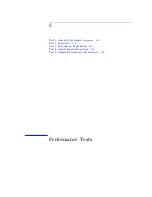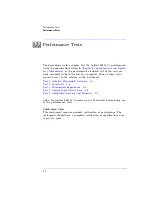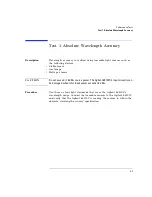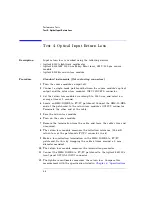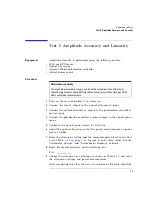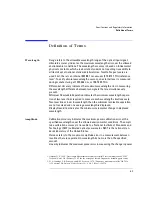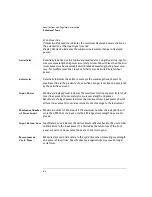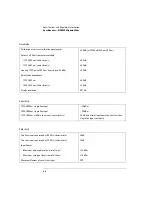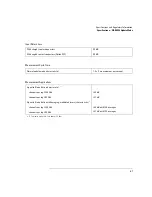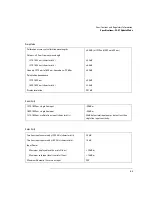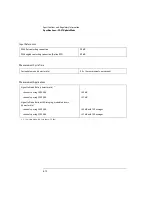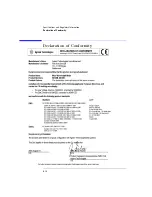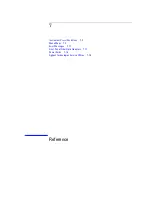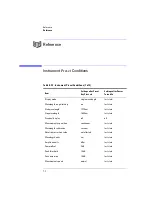
6-3
Specifications and Regulatory Information
Definition of Terms
Definition of Terms
Wavelength
Range
refers to the allowable wavelength range of the optical input signal.
Absolute accuracy
indicates the maximum wavelength error over the allowed
environmental conditions. The wavelength accuracy is based on fundamental
physical constants, which are absolute standards not requiring traceability to
artifacts kept at national standards laboratories. Two He-Ne gas lasers are
used. First, there is an internal 632.991 nm-vacuum (473.6127 THz) reference
laser
1
. To verify absolute wavelength accuracy, an external laser is measured
during manufacturing at 1523.488 nm, or 196.7804 THz
2
.
Differential Accuracy
indicates the maximum wavelength error in measuring
the wavelength difference between two signals that are simultaneously
present.
Minimum Resolvable Separation
indicates the minimum wavelength separa-
tion of two laser lines required to measure each wavelength simultaneously.
Two laser lines closer in wavelength than the minimum resolvable separation
are not resolved and one average wavelength is displayed.
Display Resolution
indicates the minimum incremental change in displayed
wavelength.
Amplitude
Calibration Accuracy
indicates the maximum power calibration error at the
specified wavelengths over the allowed environmental conditions. The ampli-
tude calibration accuracy is traceable to a National Institute of Standards and
Technology (NIST) calibrated optical power meter. NIST is the national stan-
dards laboratory of the United States.
Flatness
refers to the maximum amplitude error in a measurement between
two lines that are separated in wavelength by no more than the specified
amount.
Linearity
indicates the maximum power error in measuring the change in power
1. Obarski, G. E. 1990. “Wavelength Measurement System for Optical Fiber Communications” NIST
Technical Note 1336 (February): 18. Take the average of the two frequencies straddling gain center.
2. D. A. Jennings, F. R. Peterson, and K. M. Evenson. 1979. “Frequency measurement of the 260-THz
(1.15 micron) He-Ne laser” Optics Letters Vol. 4, No. 5 (May): 129-130.
Summary of Contents for 86120C
Page 12: ......
Page 26: ...1 14 Getting Started Returning the Instrument for Service ...
Page 27: ...1 15 Getting Started Returning the Instrument for Service ...
Page 28: ......
Page 96: ...3 18 Programming Monitoring the Instrument ...
Page 128: ...3 50 Programming Lists of Commands ...
Page 236: ...4 108 Programming Commands UNIT Subsystem ...
Page 248: ......
Page 264: ...6 16 Specifications and Regulatory Information Product Overview ...
Page 269: ...7 5 Reference Menu Maps Appl s Menu ...
Page 271: ...7 7 Reference Menu Maps Display List by WL Menu Delta On Menu ...
Page 273: ...7 9 Reference Menu Maps System Print Menu ...
Page 274: ...7 10 Reference Menu Maps System Setup Menu ...
Page 284: ......
Page 292: ......
Page 293: ......

